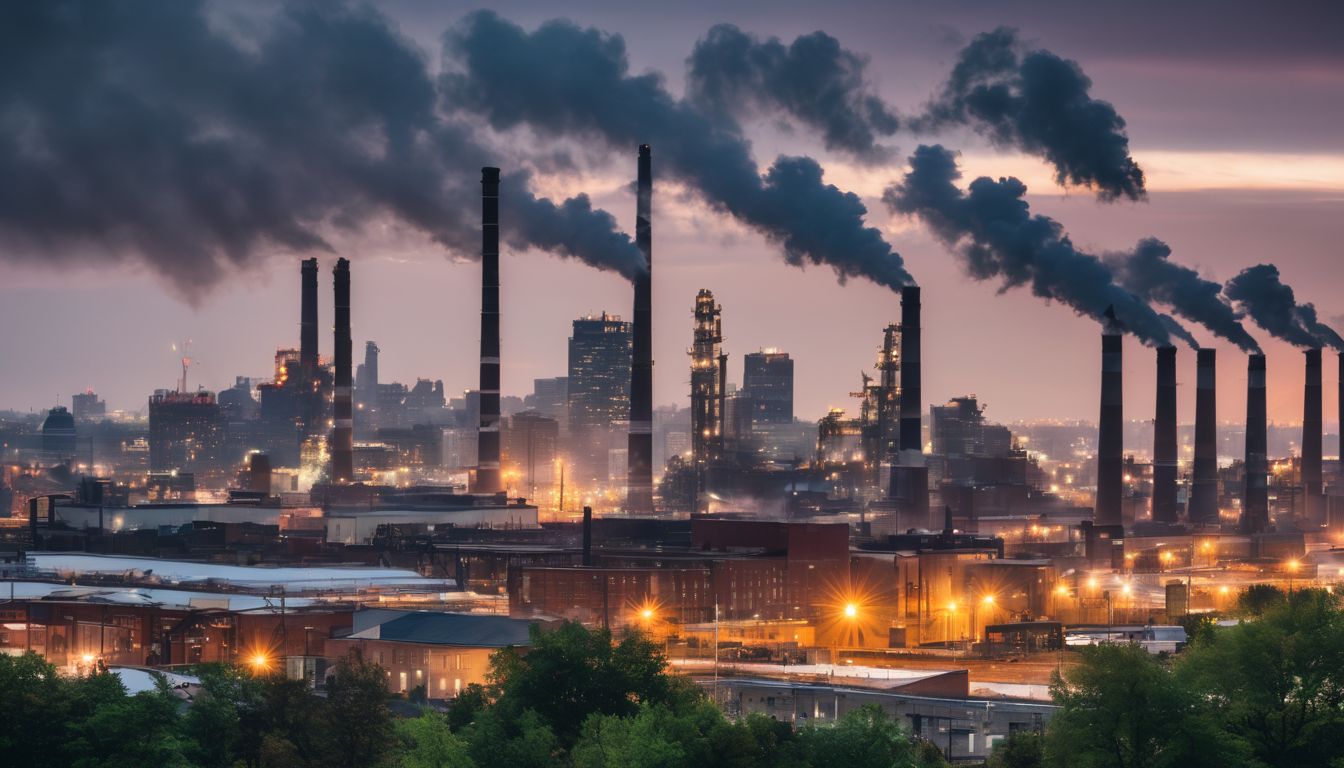Over the last 50 years, the average temperatures in Alaska have increased at more than twice the rate of the rest of the United States.1 Alaska displays effects of global warming and climate change . This is because of the ice-albedo effect. This effect is due to the fact that much of the surface of the landscape is covered in snow and ice—very reflective materials that when they melt, expose darker earth below. Darker earth absorbs heat and speeds up the melting process of surrounding ice, which has the potential to lead to sea level rise and changes in atmospheric circulation processes down the line.2
This article on global warming in Alaska is the fifth in a series of Greeniacs articles outlining how global warming will affect different regions of the US. The first four articles in the series focused on global warming on Southwestern United States.
Alaskan Climate Change Overview
As big as Alaska is, the state is characterized by several different climate zones that are separated by mountain ranges and latitude. For example, permafrost covers most of the northern third of the State, patches of permafrost exist in the central part of the State, while no permafrost exists in the south-central and southern coastal portions including southeastern Alaska, the Alaska Peninsula, and the Aleutian chain.
Mean annual temperatures in Alaska range from the low 40’s in the southern coastal parts of the state to a chilly 10°F along the Arctic Slope north of the Brooks Mountain Range. The greatest seasonal temperature contrast is found in the central and eastern portion of the interior. In this area, summer heating produces average maximum temperatures in the upper 70’s with extreme readings in the 90’s.3 Most of the effects of climate change on Alaska will be related to permafrost, sea level rise, and temperature:
- Melting glaciers and rising sea levels will increase flooding of coastal communities.
- Thawing permafrost and increased storm severity will damage municipal infrastructure, affect safe water sources in villages, and lead to increased damage along Alaska coasts and rivers, and in boreal forests.
- The subsistence way of life will be in danger as animal habitat and migration patterns shift and as hunting and fishing become more dangerous with changing sea and river ice.
- Forest fires and insect infestations will increase in frequency and intensity.4
Effects of Climate Change on Temperature in Alaska
The annual average temperature in Alaska has increased 3.4°F, while winters have warmed even more, by 6.3°F. Average annual temperatures in the state are projected to rise about 3.5 to 7°F by the middle of this century (5 to 8°F under a lower emissions scenario, and 8 to 13°F under a higher emissions scenario).5
Effects of Climate Change on Sea Level, Glacier Melting, and Storms
Alaska has more coastlines than the other 49 States in the union combined! This means that Alaska has more coastlines than average that are at risk from sea level rise, storm erosion , and thawing coastal permafrost. Many of the State’s coastlines are low in elevation, making them particularly susceptible as the protective sea ice buffer that used to characterize the coastlines disappears.8
The rate of erosion along Alaska’s northeastern coastline has doubled over the past 50 years, and the shorelines in some areas are retreating an average of ten feet per year! The ground beneath many villages is literally falling into the sea, forcing native communities to make difficult and expensive choices between relocation and engineering strategies that may or may not be effective. 9;10
Effects of Climate Change on Permafrost
Permafrost temperatures have increased throughout Alaska since the late 1970s, with the largest increases in the northern part of the State. When permafrost thaws, it can cause the soil to sink or settle, damaging the structures built upon or within that soil. Public infrastructure at risk for damage in Alaska includes roads, runways, and water and sewer systems. In total it is estimated that thawing will add a whopping $3.6 billion and $6.1 billion (10 to 20 percent) to future costs for publicly owned infrastructure by 2030, 5.6 billion and $7.6 billion (10 to 12 percent) by 2080.13 These figures do not take into account the additional costs of permafrost thawing to private property. For example, one village in Alaska, Selawik, has been dubbed the new sinking “Venice” of the Northwest. One recent article describes how the Village’s windows are cracking, doors are jamming, and ceilings are breaking loose from joists. All 180 houses in the village have experienced problems and are on a list to be leveled, but with limited funds, the housing authority has only been able to work on a few houses.14
Thawing ground also has implications for oil and gas drilling, which are important economic activities in Alaska. The number of days per year that developers are allowed to travel on the roads of Alaska has already dropped from more than 200 to about 100 days in the past 30 years. This results in a 50 percent reduction in days that oil and gas exploration and extraction equipment can be used.15
Effects of Climate Change on Alaska’s Biodiversity
Climate change will certainly affect the migration routes of land animals like reindeer and caribou.17 However, the worst impacts will most likely be felt in marine environments. Alaska currently leads the United States in the value of its commercial fisheries, which include salmon, crab, halibut, and herring. In addition to the economic value of these fish for commercial fishers, native communities in the state also depend heavily on local harvests of fish, walruses, seals, whales and sea birds for their food supply.
The biggest threat to fisheries in Alaska is sea ice retreat. Coastal communities throughout the state are already noticing a displacement of walrus and seal populations. These bottom-feeding populations are threatened when their sea ice platform retreats from the shallow coastal feeding grounds on which they depend. In one of the most productive fisheries in Alaska, the shallow shelf of the northern Bering Sea, sea ice retreat has also significantly altered the location, timing, and species composition of plankton blooms. This, in turn, has reduced the amount of food reaching the sea floor, and thus changed the species composition and populations of fish in the area.
Over the next one hundred years, scientists expect the changes already observed in the Bering Sea to spread across the Northern Pacific and Arctic Oceans. The most productive fisheries are likely to shift further offshore, away from existing fishing ports and processing infrastructure. Such a shift will either require relocation or greater investment in transportation time and fuel costs.18 For more on the impact of losing native species, read this article on the importance of biodiversity .
Forest Fires and Insect Infestations in Alaska
About twenty years ago, the people of Alaska got a glimpse of what climate change might do to the State’s boreal forests. In the 1990s, south-central Alaska experienced the largest outbreak of spruce beetles in the world. Rising temperatures at this time allowed the spruce beetle to survive over the winter and complete their life cycle in half the normal time. To make matters worse, a prolonged drought left the trees too stressed to fight off infestation. Spruce beetles have left large swaths of highly flammable dead trees in their wake. From the 1960s to the 1990s, the area burned in Alaska tripled. Since the 1990s things have only gotten worse; half of the most severe fire years on record have occurred since 1990.20
In addition to insect infestations, some of the trees of Alaska are also put at risk due to more mild winters. Yellow cedar and western red cedar are particularly vulnerable. The shallow roots of these trees are vulnerable to freezing if soil is not insulated by snow. Frozen roots have killed yellow cedar on nearly a half-million acres in southeast Alaska over the last 100 years.21 Under changing climate conditions, the average area burned per year in Alaska is projected to double by the middle of this century.
Alaska’s Response to Climate Change
So far action to mitigate the effects of climate change in Alaska has been mostly nonexistent. The closest the state has come to acknowledging the need to act to mitigate the effects of global warming was on September 21, 2007. On that date, former Governor Palin signed on as an observer (with no commitments) to the Western Climate Initiative (WCI), a collaboration launched in February 2007 between the Governors of Arizona, California, New Mexico, Oregon, and Washington to meet regional challenges raised by climate change.23
Indeed, in many ways the state of Alaska seems to be moving backwards. Late last year the Obama administration released a new five-year off-shore gas drilling plan that includes developing up to10 billion barrels of oil and 15 trillion cubic feet of natural gas from Alaska’s Outer Continental Shelf.24 As echoes of “Drill Baby Drill” ring across the melting tundra and now threaten to open up the State’s protected Arctic Refuge to oil and gas production, limited progress has been made on relocating native villages threatened by flooding and erosion. If the United States does not start shifting the focus off of drilling in Alaska and onto designating a lead state government agency to help communities in Alaska that face displacement, an agency will have to be created for the United States as a whole, as more and more communities throughout the country face disappearance.




